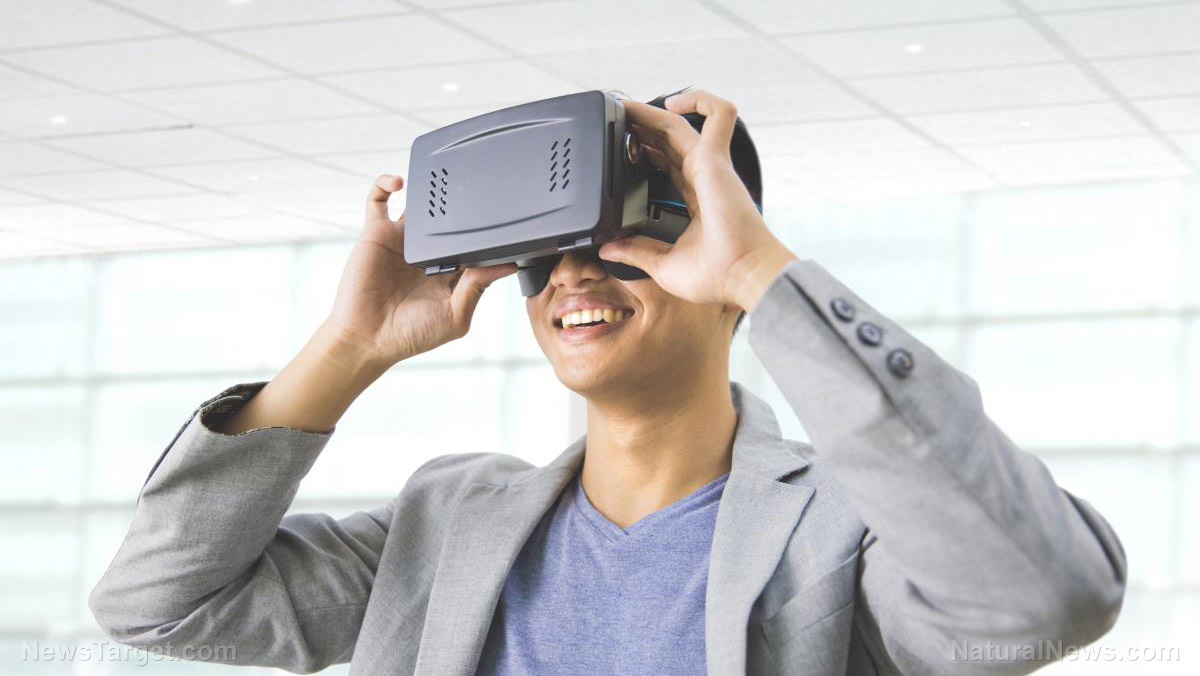Study: Virtual reality may offer benefits for patients with severe pain
07/16/2020 / By Franz Walker

Virtual reality (VR), a technology often associated with video games or entertainment, could help reduce severe pain in hospitalized patients. This is according to a recent study published in the journal PLOS One by researchers at the Cedars-Sinai Medical Center in Los Angeles.
In their study, the researchers looked into how therapeutic virtual reality can be used as a non-pharmacological treatment modality for pain in hospital patients. Prior to this, similar studies on using therapeutic virtual reality in hospital environments had been limited by short intervention times and lack of randomization. (Related: Virtual reality now being used for pain intervention and PTSD treatment.)
“This is our largest and most ambitious VR study to date,” said Dr. Brennan Spiegel, a research director at Cedars-Sinai. “Our results support previous research that VR can meaningfully reduce pain using a nonaddictive, drug-free treatment for people experience a range of different pain conditions.”
Using therapeutic VR to manage pain in hospital inpatients
The research team randomized 120 inpatients at Cedars-Sinai between November 2016 and July 2017. Eligible patients were those who reported a pain score of more than three out of 10 a day before inclusion.
From the 120 patients, about 60 received a library of 21 immersive VR experiences, including guided relaxation in natural environments, simulated flight and animated games on a Samsung Gear VR headset. The patients were advised to use the headset for three ten-minute sessions over 48 hours.
Meanwhile, 59 people in the control group were instead instructed to tune their television sets to a health and wellness channel that included guided relaxations and poetry readings.
On average, the self-reported pain scores of the patients who used VR went down by 1.72 points compared to just 0.46 for those who only watched television. The difference was even more pronounced among patients with baseline pain above seven out of ten, with a reduction of 3.04 in the virtual reality group compared to only 0.93 in control.
In addition, the effects of the virtual reality intervention on pain were significant both initially and after 48 and even 72 hours after use. Patients also reported higher satisfaction with the virtual reality experience than with watching television.
VR to manage pain at home
According to Spiegel, the study underscores how virtual reality can be an effective tool to add to traditional pain-management protocols.
“Virtual reality is a mind-body treatment that is based in real science,” Spiegel said. “It does more than just distract the mind from pain, but also helps to block pain signals from reaching the brain, offering a drug-free supplement to traditional pain management.”
Several patients found virtual reality so helpful in managing pain that they’ve started using it at home. Joseph Norris, a former U.S. Air Force lieutenant colonel, started the treatment after suffering from chronic pain caused by radiation treatments to his hip and pelvic area. For years, Norris had been taking pain medications for 20 years until he began searching for alternative therapies.
Six months ago, Norris tried therapeutic virtual reality; today, he now uses his VR headset once a week. Norris says that the technology is “a tool I use to successfully divert attention away from my pain, and it helps me reinforce my breathing pattern.”
Spiegel and his team have since followed up their study with a new one that followed patients using therapeutic virtual reality in their homes from 60 days. The goal for him is to make the technology just another tool for managing pain in and out of the hospital.
“I believe that one day soon VR will be part of every doctor’s tool kit for pain management,” Spiegel added.
Sources include:
Tagged Under: chronic pain, future tech, goodtech, medical tech, pain management, pain relief, Virtual reality, vr
RECENT NEWS & ARTICLES
COPYRIGHT © 2017 RESEARCH NEWS

















